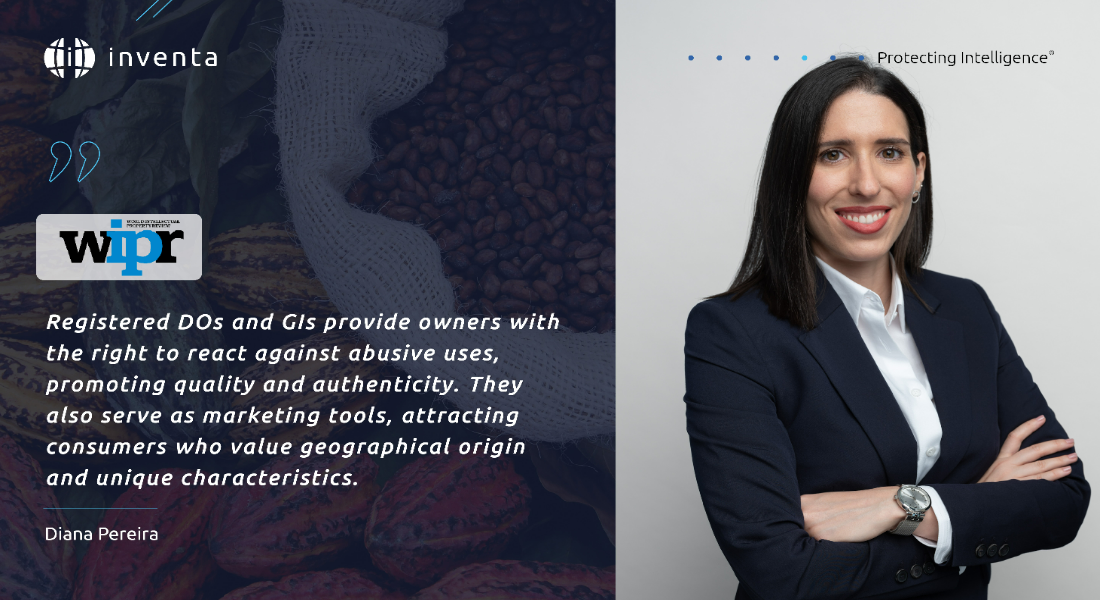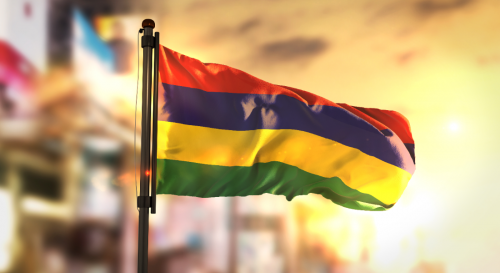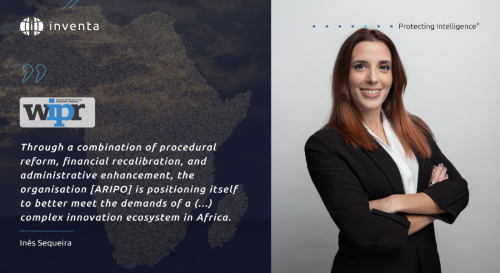
Cocoa paradise proves fertile ground for geographical indications
São Tomé and Príncipe is an island state formed by two islands of volcanic origin, located in the Gulf of Guinea, approximately 300km from the West African coast on the imaginary equator. São Tomé, the largest island, has an area of 859 km2, while Príncipe has an area of 142 km2.
The archipelago boasts a majestic setting due to its lush tropical vegetation, featuring numerous valleys, rivers, and streams. Its terrain is prominently rugged, with altitudes exceeding a thousand meters, including the highest peak, S. Tomé, and other peaks like Calvário, Cabumbé, Cão Grande, and Pico do Príncipe.
Its location explains the humid tropical climate that is characteristic of the Central African region, with average annual temperatures around 27º/28ºC. The "gravana" period occurs between June and August, with drier weather and lower temperatures. The rainy season from October to May is hot and intense, with tropical storms and calm seas. Inland areas have specific microclimates with lower temperatures, fog, and extreme humidity.
These geoclimatic characteristics allow to production of distinct products (cocoa, chocolate, coconut, pepper, and coffee), which provide its inhabitants with a valuable inheritance that, under certain conditions, may be eligible for protection through designations of origin or geographical indications.
São Tomé and Principe’s reality
In São Tomé and Príncipe, the protection of unique products through designations of origin (henceforth “DO”) or geographical indications (henceforth “GIs”) has received less attention than other IP rights like trademarks and patents, despite their potential for developing such products. This may be attributed to the lack of knowledge among local producers about the existence of legal procedures to protect and bestow ownership over their products through DO and GIs.
For instance, if we briefly look at the published trademarks in São Tomé and Príncipe, more specifically in what concerns the nice classification related to cocoa and chocolate (class 30), we learn that, up to date, there are 470 trademarks protected in the jurisdiction (140 national applications, 11 African Regional Intellectual Property Organization applications, and 319 Madrid applications).
It is, however, worth noting that of the universe of 470 trademarks, only 14 were filed by Santomean national entities. Such figures may be driven by the native's lack of understanding regarding trademark protection and the value of their business within their own country.
In order to obtain know-how to handle applications of DO or GIs and also better knowledge to raise awareness amongst the nationals on this IP regime, the regulatory entity of IP matters in São Tomé and Príncipe (SENAPI)'s technicians participated in a formation promoted by the World Intellectual Property Organization (WIPO) and the Portuguese General Direction for Agriculture and Rural Development, with the aim of training staff in the field of Geographical Indications for agricultural products and foodstuffs.
Furthermore, Instituto Marquês de Valle Flôr, a foundation for development and cooperation, along with SENAPI, have recently promoted a “Masterclass of Geographical Indications for São Tomé and Príncipe's Export Crops." Focusing on the support of agricultural export sectors, training was given on geographical indications to enhance cocoa, coffee, and pepper crops.
Registration of the first GI
The entities’ efforts to raise the awareness of the producers and form responsible official bodies proved fruitful, as 2023 was the milestone of this IP right in São Tomé and Príncipe, with the granting of the first GI “Cacau de São Tomé" (Application no. ST/IG202101, granted October 12, 2023) filed by Associação para a Gestão da Indicação Geográfica Protegida “Cacau de São Tomé”.
The registration of “Cacau de São Tomé” resulted from active cooperation among the national cocoa producers, the government, and WIPO. It should be noted that São Tomé and Príncipe cocoa is already recognised by the International Cocoa Organization (ICCO) as one of the world's "fine" (or "aromatic") cocoas.
Cocoa has a deep-rooted history on these islands, dating back to 1822 when Portuguese settlers introduced cocoa trees from Brazil to Príncipe. São Tomé and Príncipe once stood as the world’s largest cocoa producer, known for both quantity and quality. However, political and economic factors led to the decline of cocoa plantations over the years. By the time of independence, cocoa production plummeted, and the production relied on quality rather than quantity, betting on artisanal production.
São Tomé's unique cocoa flavour is obtained due to the richness of its volcanic soil and its tropical climate, allied to a predominant artisanal way of production. Producers rely on traditional artisanal technologies, such as fermentation boxes and wooden solar dryers; additionally, thanks to the natural fertility conditions of the soil in São Tomé, producers generally don't use any fertilizers in cocoa production.
Cocoa is carefully handled from the plantation of the cocoa trees until the transformation into cocoa derivates (prominently chocolate).
Legal framework
Relying on its legal framework in São Tomé and Príncipe, DO and GI correspond to a sui generis system of IP rights separate from trademark rights or any other IP rights, as they are regulated under specific provisions (ie, articles 253 to 262 of the IP Code and Decree-Law no. 21/2015).
As per article 255, an application for registration of this IP regimen should contain a delimitation of the geographical area within which the product identified by the DO or GI is produced; a description of the product’s characteristics, quality, or reputation; and standards of production with which the holders should conform. These elements shall be gathered in a document called the “product specification”.
It is worth noting the following significant features: (a) rights constituted via registration; (b) collective rights that belong to all producers in a (c) delimited geographical area, who comply with the (d) specific conditions of production for the product; (e) territorial rights, as an application for registration must be filed in the country in which protection is sought; and (f) potentially unlimited in time, not being necessary to pay any official maintenance or renewal fees.
The term "potentially" is used since the right only expires if the product's attributes are extinguished or the geographical area at stake ceases to exist. Furthermore, according to Article 262 of the IP Code, registrations will lapse at the request of any interested party if the designation of origin or geographical indication becomes, in fair, ancient, and established usage of the economic activity, simply the generic of a manufacturing system or a specific type of product.
In terms of terminology, the IP Code distinguishes between two distinct legal concepts: (i) designation of origin (DO), which is marked by cumulative requirements that link a product to the characteristics of the demarked location, and (ii) geographical indications (GI), which has fewer demanding requirements. These are explained below.
(i) As per Art. 1 of Decree-Law No. 21/2015, a DO is the name of a particular place, region, or, exceptionally, a country, which designates or identifies a product from that location—the qualities of which are due to its geographical environment, including natural and human factors. Further, all stages of production occur within the delimited geographical area.
(ii) A GI, on the other hand, has fewer demanding requirements, as the product is only required to possess a certain quality, reputation, or other characteristic that can be essentially attributed to its geographical origin. At least one stage of the production shall occur within the delimited area.
The first step in the archipelago’s protection of GIs was taken with the national registration of “Cacau de São Tomé." It is expected that soon other distinct products, such as the Santomean pepper and coffee, will be registered nationally, or internationally through the Lisbon System.
Registered DOs and GIs provide owners with the right to react against abusive uses, promoting quality and authenticity. They also serve as marketing tools, attracting consumers who value geographical origin and unique characteristics. Protected goods also foster customer loyalty and contribute to the development of rural areas by establishing premium prices for goods, and promoting investment and employment.
Being a signatory of the Geneva Act of the Lisbon Agreement (effective since 02/11/2023), São Tomé and Príncipe has two routes of protection available for the protection of these sui generis rights: national and international routes.
In short, the Lisbon System for the International Registration of DO and GIs is administered by WIPO and offers a simplified and user-friendly means of obtaining protection for geographical indications or denominations of origin. Through a single registration procedure and a set of fees, protection can be obtained in other countries (and in international organisations, such as the European Union) covered by the Lisbon System.
The first step in the archipelago’s protection of GIs was taken with the national registration of “Cacau de São Tomé." It is expected that soon other distinct products, such as the Santomean pepper and coffee, will be registered nationally, or internationally through the Lisbon System. The commitment to protecting its unique products will instil trust amongst the producers, as they will become legally shielded against abusive uses and will have more financial income from their work.
This is a co-published article, which was originally published in the World Intellectual Property Review (WIPR).
Currency Info
Final charges will be made in USD.
Currency conversion is for information purposes only and accuracy is not guaranteed. Overseas customers are encouraged to contact their bank or credit card provider for details on any additional fees these institutions may include for currency conversion.
- USD 312.389 NGN
Territory List
There are no results for your search.
- Africa
- Algeria
- Angola
- Benin
- Botswana
- Burkina Faso
- Burundi
- Cameroon
- Cape Verde
- Central African Republic
- Chad
- Comoros
- Congo (Republic)
- Côte d'Ivoire
- Democratic Republic of the Congo
- Djibouti
- Egypt
- Equatorial Guinea
- Eritrea
- Eswatini (Swaziland)
- Ethiopia
- Gabon
- Gambia
- Ghana
- Guinea
- Guinea-Bissau
- Kenya
- Lesotho
- Liberia
- Libya
- Madagascar
- Malawi
- Mali
- Mauritania
- Mauritius
- Mayotte
- Morocco
- Mozambique
- Namibia
- Niger
- Nigeria
- Réunion
- Rwanda
- Sao Tome and Principe
- Senegal
- Seychelles
- Sierra Leone
- Somalia
- South Africa
- South Sudan
- Sudan
- Tanzania (mainland)
- Togo
- Tunisia
- Uganda
- Western Sahara
- Zambia
- Zanzibar
- Zimbabwe
- Africa (OAPI)
- Africa (ARIPO)
- Other
- East Timor
- Macao
- Maldives
- Portugal
- European Patent (EPO)
- European Union Trademark (EUTM)
- International Trademark (Madrid System)
- Patent Cooperation Treaty (PCT)




